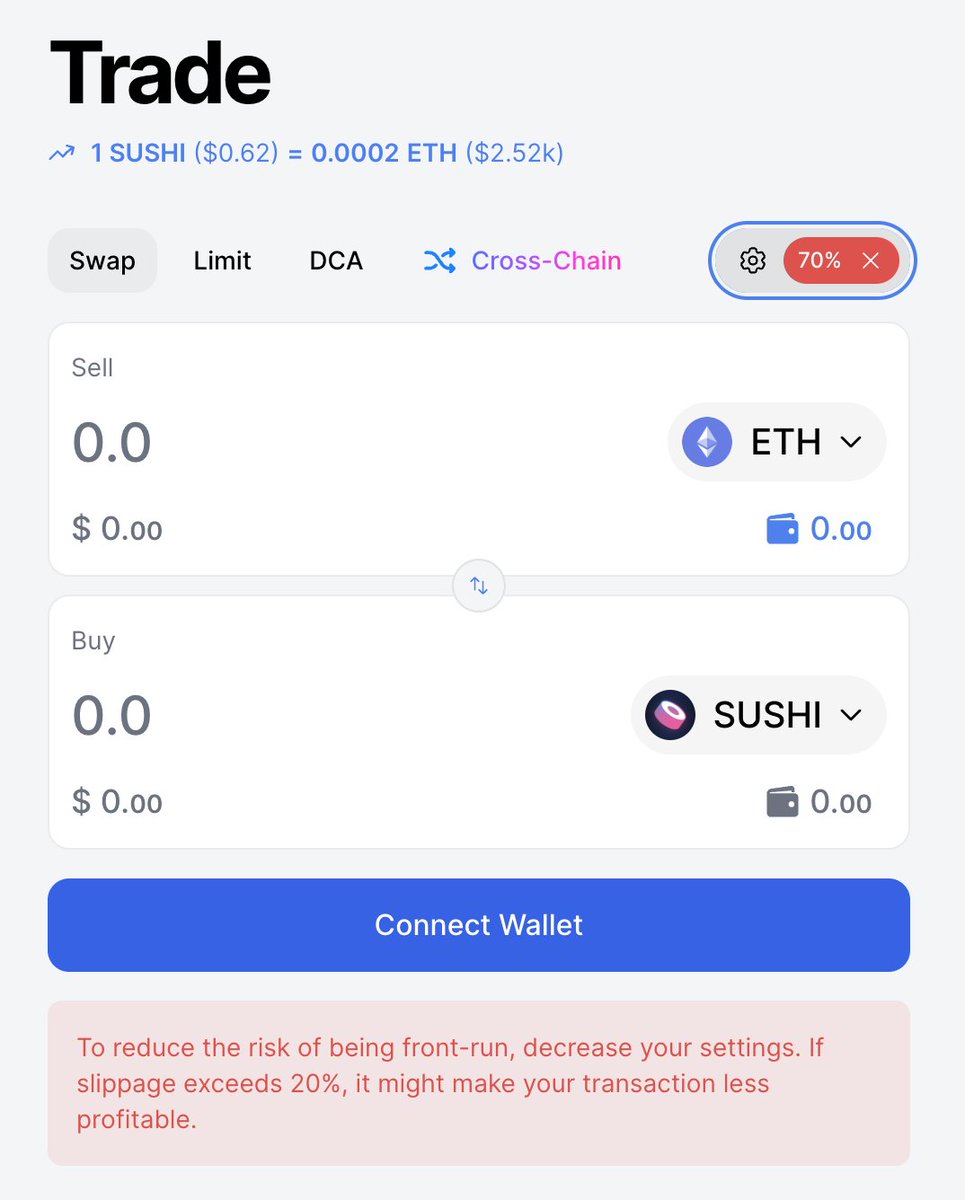
Preț SushiSwap

Riscul emitentului SUSHI
Limitarea răspunderii
OKX nu furnizează recomandări privind investițiile sau activele. Trebuie să analizați cu atenție dacă să tranzacționați sau să dețineți activele digitale prin prisma stării dvs. financiare. Consultați-vă cu un profesionist în domeniul juridic / fiscal / de investiții pentru întrebări despre circumstanțele dumneavoastră specifice. Pentru detalii suplimentare, consultați Condițiile de utilizare și Avertizarea de risc. Prin utilizarea paginii web terțe („TPW”), acceptați că orice utilizare a unei TPW va fi supusă oricăror și guvernată de orice condiții pentru TPW. Exceptând mențiunile exprese în scris, OKX și afiliații săi („OKX”) nu sunt în niciun fel asociați cu proprietarul sau operatorul TPW. Sunteți de acord că OKX nu este responsabilă sau răspunzătoare pentru nicio pierdere, daună și orice alte consecințe care decurg din utilizarea de către dumneavoastră a unei TPW. Țineți cont că utilizarea TPW poate duce la pierderea sau diminuarea activelor dumneavoastră. Este posibil ca produsul să nu fie disponibil în toate jurisdicțiile.
Informații de piață despre SushiSwap
Capitalizare de piață = Ofertă în circulație x Ultimul preț

Flux SushiSwap











Calculator SUSHI


Performanța prețului SushiSwap în USD
Conversii SushiSwap populare
| 1 SUSHI în USD | 0,52140 $ |
| 1 SUSHI în EUR | 0,45243 € |
| 1 SUSHI în PHP | 29,8095 ₱ |
| 1 SUSHI în IDR | 8.560,17 Rp |
| 1 SUSHI în GBP | 0,38749 £ |
| 1 SUSHI în CAD | 0,71601 $ |
| 1 SUSHI în AED | 1,9148 AED |
| 1 SUSHI în VND | 13.624,25 ₫ |
Despre SushiSwap (SUSHI)
- Pagina web oficială
- Github
- Explorator bloc
Întrebări frecvente SushiSwap
Unii factori comuni includ dinamica cererii și ofertei pieței, sentimentul general față de criptomonede, volumul tranzacționării pe schimburi, evoluții și actualizări legate de platforma SushiSwap, parteneriate, anunțuri de reglementare și tendințe mai ample ale pieței.
Cu SushiSwap, există mai multe modalități de a genera recompense. O metodă este furnizarea de lichiditate fondurilor de lichiditate ale platformei, câștigând o parte din comisioanele de tranzacționare generate de utilizatorii SushiSwap. Alternativ, utilizatorii pot participa la producerea randamentului, care implică mizarea activelor lor pentru a câștiga tokeni suplimentari ca recompensă.
Cumpărați ușor tokenuri SUSHI pe platforma de criptomonedă OKX. Printre perechile de tranzacționare disponibile în terminalul de tranzacționare spot OKX se numărăSUSHI/USDTșiSUSHI/USDC.
Puteți și cumpăra SUSHI cu peste 99 de monede fiduciare selectând Cumpărare Expres opțiune. Alte tokenuri cripto populare, cum ar fiBitcoin (BTC),Ethereum (ETH),Tether (USDT)șiUSD Coin (USDC), sunt disponibile și ele.
În plus, puteți face swap cu criptomonedele existente, inclusivXRP (XRP),Cardano (ADA),Solana (SOL)șiChainlink (LINK), pentru SUSHI cu comisioane zero și fără derapaj al prețului prin utilizareaOKX Conversie.
Pentru a vizualiza prețurile de conversie în timp real estimate între monedele fiduciare, cum ar fi USD, EUR, GBP și altele, în SUSHI, vizitațiCalculator de conversie cripto OKX. Bursa de criptomonede cu lichiditate ridicată de la OKX asigură cele mai bune prețuri pentru achizițiile dvs. de criptomonedă.
Raportare privind gazele cu efect de seră
Calculator SUSHI















